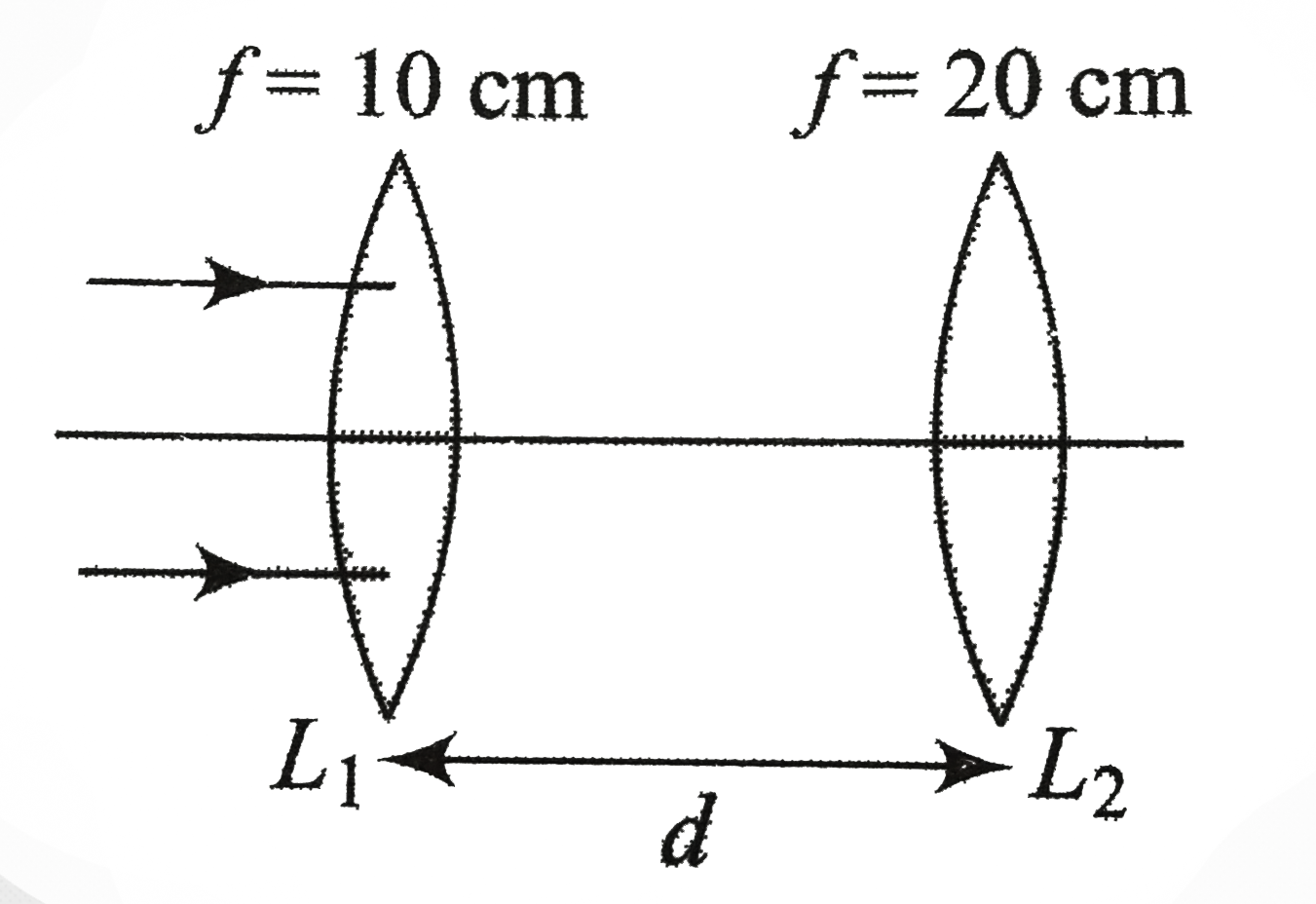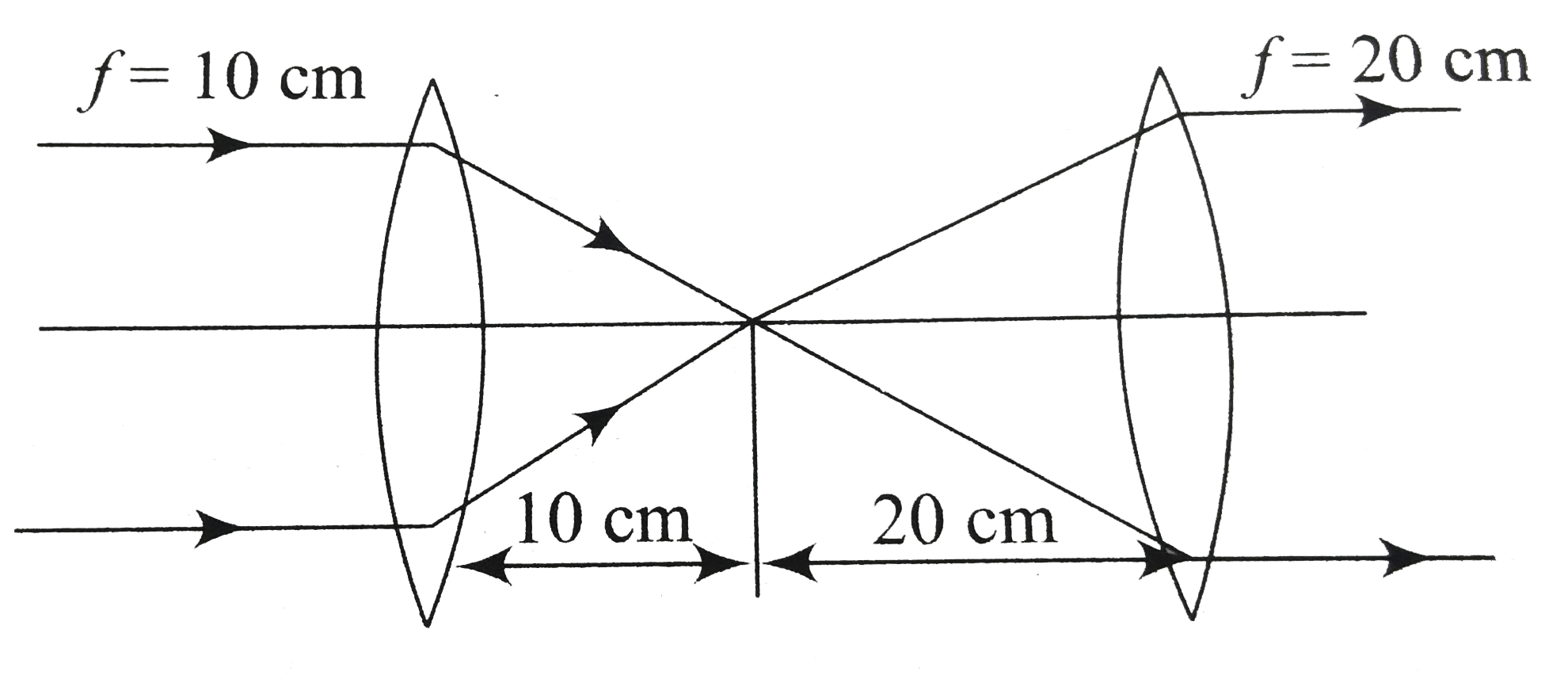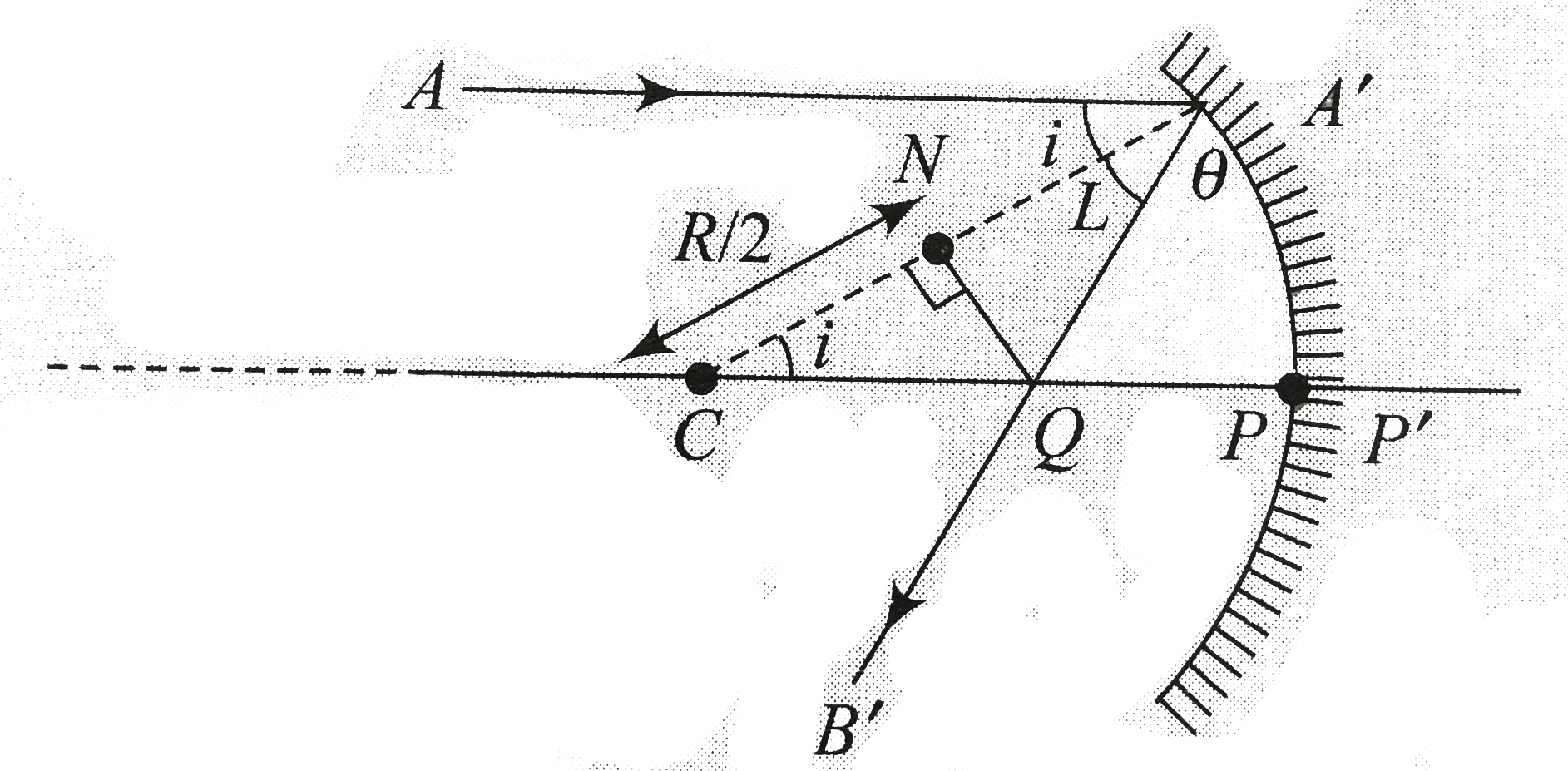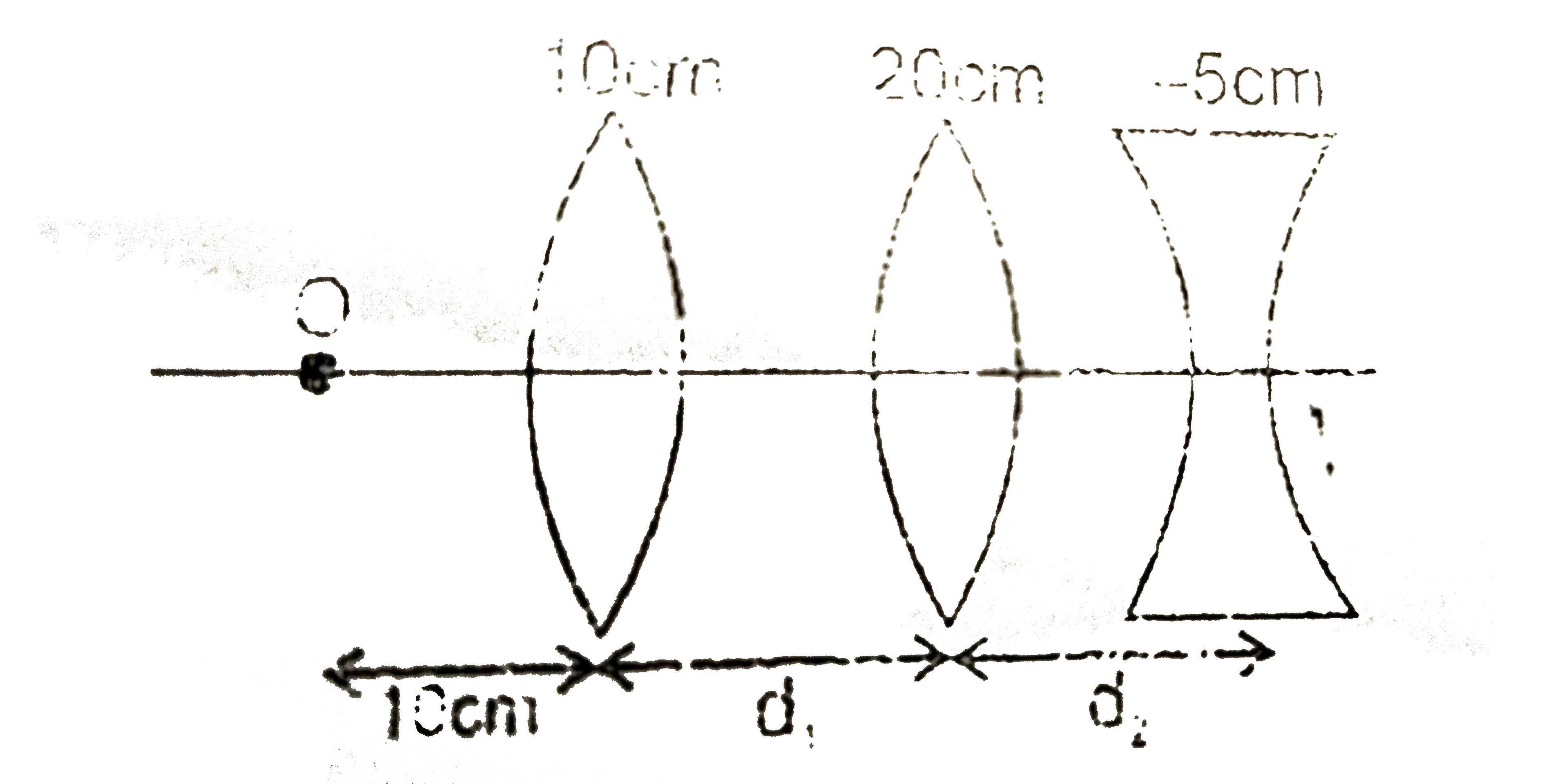Figure, shown two converging lenses. Incident rays are parallel to the principal axis. What should be the value of d so that final rays are also parallel?
Here, the diameter of ray beam become wider.

d=10+20=30cm

Topper's Solved these Questions
- GEOMETRICAL OPTICSBOOK - CENGAGE PHYSICS ENGLISHCHAPTER - GEOMETRICAL OPTICSEXERCISE - Subjective
26 Videos
- GEOMETRICAL OPTICSBOOK - CENGAGE PHYSICS ENGLISHCHAPTER - GEOMETRICAL OPTICSEXERCISE - Single Correct
221 Videos
- GEOMETRICAL OPTICSBOOK - CENGAGE PHYSICS ENGLISHCHAPTER - GEOMETRICAL OPTICSEXERCISE - Exercise1.6
15 Videos
- ELECTRON,PHONTS,PHOTOELECTRIC EFFECT & X-RAYSBOOK - CENGAGE PHYSICS ENGLISHCHAPTER - ELECTRON,PHONTS,PHOTOELECTRIC EFFECT & X-RAYSEXERCISE - dpp 3.3
15 Videos
- HEATING EFFECT OF CURRENTBOOK - CENGAGE PHYSICS ENGLISHCHAPTER - HEATING EFFECT OF CURRENTEXERCISE - Thermal Power in Resistance Connected in Circuit
27 Videos
Similar Questions
The angle of incidance for an equilateral prism is 60∘. What should be the refractive index of prism so that the ray is parallel to the base inside the prism ?
View SolutionAssertion:- Paraxial rays are always parallel to the principal axis.
Reason:- A parallel beam parallel to principal axis converges at the focal point.
View SolutionA ray of light is incident on a glass sphere of refractive index 3/2. What should be the angle of incidence so that the ray which enters the sphere does not come out of the sphere ?
View SolutionUnpolarized light is incident on a plane glass surface. What should be the angle of incidence so that the reflected and refracted rays are perpendicular to eachother ?
View SolutionFind the distance CQ if incident light ray parallel to principal axis is incident at an angle i. Also, find the distance CQ if i→0 .

View SolutionWhat should be the value of distance d so that final image is formed on the object itself. (Focal length of the lenses are written on the lenses.)

View SolutionA ray of light, after refracting through a concave lens, emerges parallel to the principal axis. Draw a ray diagram to show the incident ray and its corresponding emergent ray.
View SolutionA parallel beam of light is incident on a converging lens parallel to its principal axis. As one moves away from the les on the other side on its principal axis, the intensity of light
View SolutionA ray of light is incident on a concave mirror . It is parallel to the principal axis and its height from principal axis is equal to the focal length of the mirror. The ratio of the distance of point B to the distance of the focus from the centre of curvature is (AB is the reflected ray)
_E01_055_Q01.png)
View SolutionThe values of d1 & d2 for final rays to be parallel to the principal axis are: (focal lengths of the lenses are written above the respective lenses in the given figure)

View Solution
